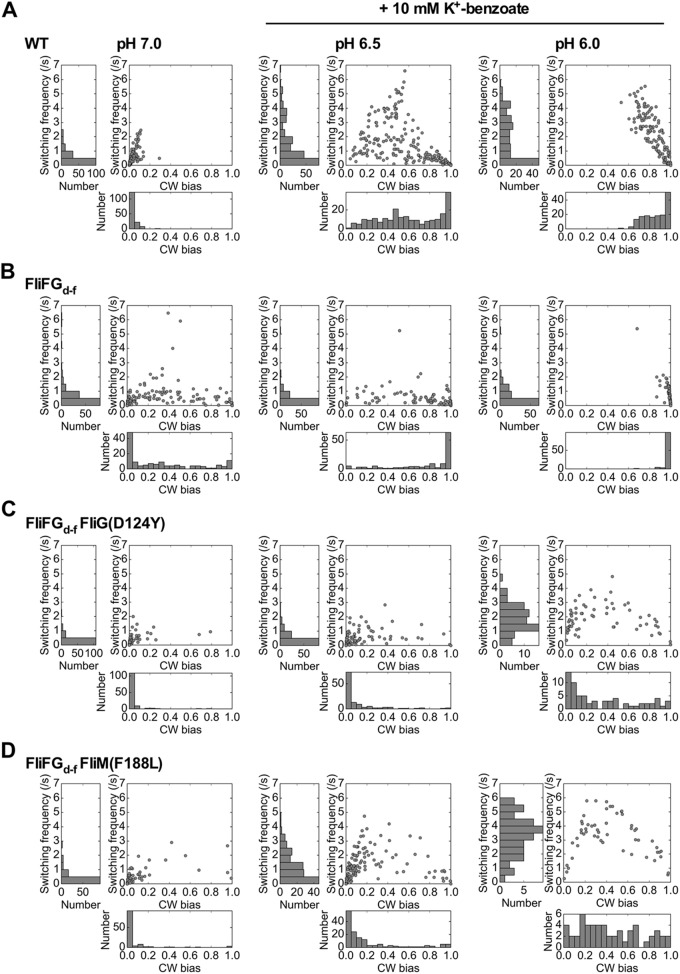FIG 2.
CW bias and switching frequency of the flagellar motor. (A to D) CW bias and switching frequency of wild-type (A), FliFGd-f (B), FliFGd-f FliG(D124Y) (C), and FliFGd-f FliM(F188L) (D) motors were analyzed at pH 7.0 (left panels), at pH 6.5 in the presence of 10 mM potassium benzoate (middle panels), or at pH 6.0 in the presence of 10 mM potassium benzoate (right panels). Rotation measurements of tethered cells were performed at room temperature for 30 s. CW bias versus switching frequency plots were generated from individual motors analyzed under each condition. Histograms of CW bias and switching frequency were shown on the bottom and left, respectively. The number of tethered cells analyzed under each condition are as follows: wild-type cells at pH 7.0, 154 cells; wild-type cells at pH 6.5 with potassium benzoate, 220 cells; wild-type cells at pH 6.0 with potassium benzoate, 156 cells; FliFGd-f at pH 7.0, 136 cells; FliFGd-f at pH 6.5 with potassium benzoate, 127 cells; FliFGd-f at pH 6.0 with potassium benzoate, 106 cells; FliFGd-f FliG(D124Y) at pH 7.0, 116 cells; FliFGd-f FliG(D124Y) at pH 6.5 with potassium benzoate, 121 cells; FliFGd-f FliG(D124Y) at pH 6.0 with potassium benzoate, 67 cells; FliFGd-f FliM(F188L) at pH 7.0, 116 cells; FliFGd-f FliM(F188L) at pH 6.5 with potassium benzoate, 145 cells; FliFGd-f FliG FliM(F188L) at pH 6.0 with potassium benzoate, 55 cells.

